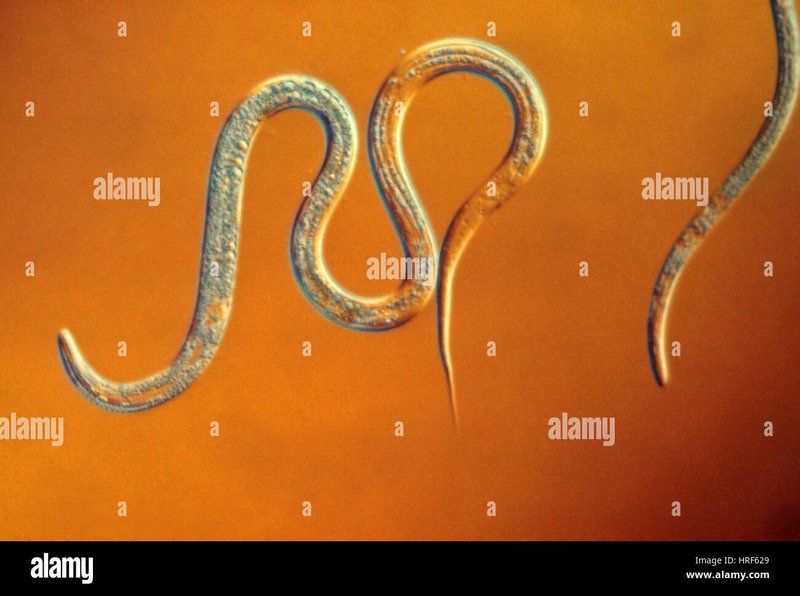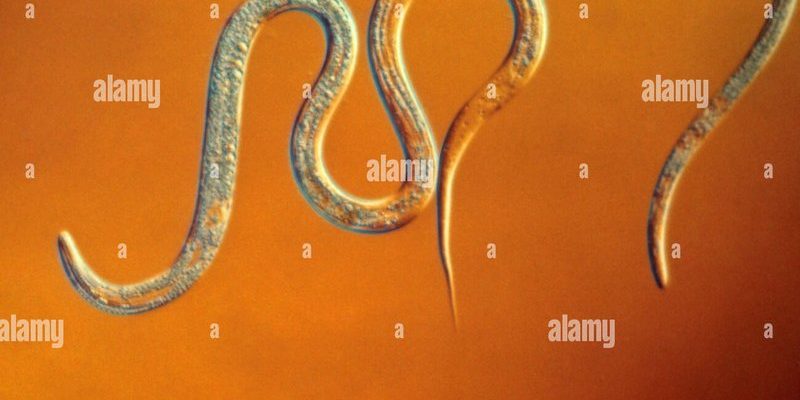
Just like in a bustling city, where different people coexist and contribute to the greater ecosystem, these worm species interact in ways that can be surprising. You might be wondering if they have anything in common or how to distinguish them from one another. So, let’s dive in and explore the similarities and differences between vinegar eels and their fellow worms, revealing their secrets and quirks along the way.
What Are Vinegar Eels?
To start off, vinegar eels, scientifically known as Turbatrix aceti, are free-living nematodes found in vinegar, especially during fermentation. Imagine them as the party guests that show up once the drinks have started flowing, helping break down sugars and making the environment more hospitable for other organisms. These slippery little creatures can grow up to about 1-2 cm long and are often found swimming energetically in their acidic home.
Their long, slender bodies allow them to zip through the liquid with ease. You might notice that they move in a whip-like manner, which can be quite mesmerizing to watch. Vinegar eels thrive in environments where other organisms might struggle, making them vital players in the decomposition process. They consume bacteria, yeast, and decaying plant matter, which helps maintain a balanced ecosystem.
The fascinating part? These creatures are practically harmless to humans. They may even be beneficial if you’re using vinegar in your kitchen! Just keep in mind, if you see them, it’s a sign your vinegar is alive and working.
Similar Worm Species in Aquatic Environments
Now let’s look at some of the other worm species that inhabit similar environments. While vinegar eels are a unique bunch, you can find various other worms like nematodes and oligochaetes swimming around in soil and aquatic habitats. Both types have their specialties, and understanding their roles can help shed light on the bigger picture of these ecosystems.
Nematodes, for instance, are a diverse group that can be found in a variety of environments—everything from soil to ocean floors. More than just cute little squigglers, these worms play essential roles in nutrient cycling. They feed on bacteria and other microorganisms, contributing to the breakdown of organic matter just like vinegar eels. You can think of them as the earth’s clean-up crew, ensuring that nutrients are recycled back into the ecosystem.
On the flip side, you have oligochaetes, which include familiar names like earthworms. These critters are well-known for their role in soil aeration and nutrient enrichment. While they prefer moist soil, some species can also venture into freshwater. Unlike vinegar eels that thrive in acidic environments, oligochaetes flourish in neutral to slightly alkaline conditions, showcasing a different side of worm life.
Life Cycles: Where Do They Diverge?
Life cycles are where these worm species really start to show their differences. Vinegar eels reproduce quickly, laying eggs in their vinegar habitat that hatch into larvae in just a few days. With optimal conditions, they can rapidly increase their population, making them a go-to model in scientific research.
In contrast, nematodes and oligochaetes have varied reproductive strategies. Some nematodes can reproduce parthenogenetically, meaning females can produce eggs without male fertilization. Meanwhile, oligochaetes typically require a mate to reproduce, forming clitellum during mating season—a thickened band that helps in the exchange of sperm. This process couples well with their role as decomposers, giving them a slightly slower but steady population growth compared to vinegar eels.
Understanding these life cycles helps scientists study their ecological impacts and the ongoing dynamics within their habitats. It raises interesting questions about how each species adapts to its environment and what that means for their survival.
Feeding Habits: Who Eats What?
When it comes to feeding habits, vinegar eels are known as microphages, which means they feed on microorganisms like bacteria and yeast. They thrive in the presence of decaying organic matter, taking in nutrients while cleaning up their environment. You could say they’re the hygiene experts of the vinegar world!
Nematodes, on the other hand, have a much broader diet. While many feed on bacteria, some are even predatory—consuming other nematodes or small invertebrates. This adaptability allows them to survive in various environments, from the depths of the ocean to your backyard garden.
Oligochaetes primarily feed on decaying plant matter and soil microorganisms. Their role in aerating the soil while munching away at organic material helps improve soil structure and fertility—making them essential for any healthy garden.
So, whether they’re cleaning up vinegar or enriching soil health, each worm species plays a vital role in their ecosystem, showcasing how interconnected life can be even at the microscopic level.
Environmental Impact: What’s at Stake?
Understanding the role of vinegar eels and similar worm species in their respective environments is crucial for several reasons. For one, vinegar eels play an important part in fermentation processes. Their presence can indicate the health of an ecosystem, particularly in fermented foods. If the vinegar is alive and teeming with vinegar eels, it means the ecosystem is thriving!
Nematodes and oligochaetes also contribute significantly to nutrient cycling and soil health. Their activities can enhance crop yields and keep natural ecosystems balanced. However, environmental changes, such as pollution or habitat destruction, can impact their populations. For instance, if an area becomes too acidic due to pollution, you might not find vinegar eels thriving, which can indirectly affect the fermentation processes they facilitate.
We should think of these species like tiny gears in a larger machine. If one gear falters or gets stuck, the entire system may struggle to function as intended. Recognizing the vital roles these worms play can help promote conservation practices and support healthier ecosystems.
So, there you have it—vinegar eels, nematodes, and oligochaetes each play essential roles in their environments, though they do so in different ways. Just like the characters in a good book, each brings something unique to the story of life in aquatic and soil ecosystems.
Next time you pour a bottle of vinegar, take a moment to appreciate the tiny vinegar eels swimming through it. They’re not just squiggly little things; they represent the complexity and interconnectedness of life. Whether you’re passionate about gardening, fermentation, or simply curious about the world around you, understanding these worm species can open your eyes to the wonders of ecosystems—both large and small.

